29. Nov 2022 - DOI 10.25626/0142
Mārtiņš Kaprāns is a senior researcher at the Institute of Philosophy and Sociology, University of Latvia. He received a PhD in communication studies from University of Latvia in 2012. His research has focused on memory politics, Russophone communities in the Baltic states, and Soviet-era cultural history. He has published among other in the Journal of Ethnic and Migration Studies, Journal of Baltic Studies, Memory Studies, Euro-Asia Studies.
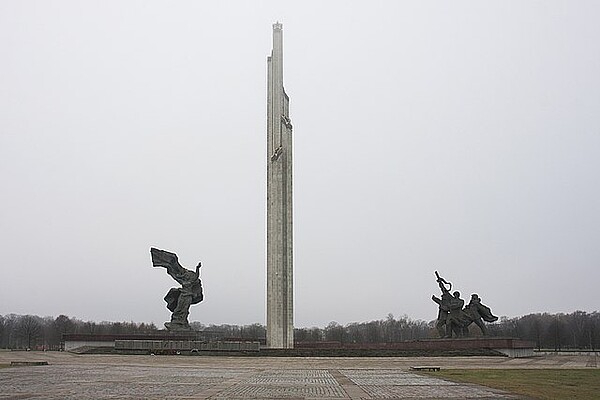
Russia’s full-scale invasion of Ukraine in February 2022 has evoked various historical analogies. International media have, for example, often drawn parallels with Hitler’s expansionist policies and the 1939 invasion of Poland. Meanwhile, in Latvia, like elsewhere in Russia’s neighbouring countries, for many people, this war is reminiscent of the Soviet occupation during the Second World War. Then, like today, the occupying authorities terrorized the civilian populations of the occupied territories; then, like now, they staged phony referendums in order to “legitimize” the annexation of the occupied territories. But the Russian invasion of Ukraine has also exposed persistent tensions in how the events of June 1940 (the Soviet invasion and occupation of the Baltics) are being remembered amongst different parts of Latvia’s multi-ethnic population. These tensions have nowhere else been more vividly embodied than in the so-called “Victory Monument” situated in Latvia’s capital Riga.[1] For many years, the monument acted as the focal point for the local Russophone community, providing them a place to remember the “Great Patriotic War”, as the Second World War was called in the Soviet Union, and to celebrate the “liberation of Europe” by the glorious Soviet Army every 9 May – the day that marks the end of the Second World War in Soviet historical memory. Over the past 20 years, the monument evolved into a realm of memory that served as an anchor for Latvia’s Russian-speaking identity, but at the same time, it also bolstered polarization within Latvia's social memory of the Second World War. This summer, on 25 August, the enormous monument with its central white obelisk was dismantled. The Victory Monument has thus vanished from view, but the question remains: will Latvia’s public sphere, now liberated from the legacy of Soviet memory, be able to move towards social cohesion?
Work on the monument complex, which is located opposite the downtown area, on the western side of the Daugava River, began in 1979. It was part of a broader politics of history pursuit by then General Secretary of the Communist Party of the USSR, Leonid Brezhnev, that aimed at mythologizing the USSR’s victory in the Great Patriotic War. The monument complex constituted a visible ideological stamp in the landscape of Riga by way of reiterating the Soviet narrative about how the war began in 1941 with Nazi Germany’s attack on the USSR, and how the Soviet Socialist Republic of Latvia was eventually liberated in 1944/45. The monument was opened on 5 November 1985, at a time when Mikhail Gorbachev, the reformer of the Soviet system, had already come to power. An essential part of his new program was to be more open about the ideological distortions of recent history. Indeed, the elimination of the “white spots of history” in the Soviet war narrative – in this case, the military invasion and illegal annexation of the Baltic states into the USSR in 1940 – inevitably turned the Victory Monument into a symbol of Soviet occupation.
After the restoration of Latvia’s independence, the Victory Monument’s lost its meaning. Former citizens of the USSR, for whom the Soviet historical narrative had served as a fundamental part of their identity, were unable to reconcile the monument’s relevance in their morally disoriented social memory during the transition. The 1990s were a turbulent decade of historical adjustment and recalibration; for example, in the mid-1990s, only a few hundred (mostly) elderly Russian-speaking people gathered at the monument on 9 May. In 1997, a group of Latvian nationalists tried (but failed) to destroy the monument, to remind people of its questionable symbolism. Also in the mid-1990s, there was public controversy over the official commemoration of veterans of the former Latvian Waffen-SS Legion in Riga.[2] Ultimately, both events drew renewed attention to the monument making it appear at the centre of the realm of memory that is in sharp opposition to the politically established and dominant anti-Soviet narrative in Latvia.
In the 2000s, the Victory Monument gradually became the central symbol of identity for the Russophone minority. With Vladimir Putin’s rise to power, Russia's hegemonic desire to write the “only correct history” of the Second World War was revived. The historical propaganda that began flowing into Latvia through Russian media and public diplomacy projects also found its way into the country’s politics. The most popular political party amongst Latvia’s Russian-speakers, the Harmony Centre (Saskaņa), has skilfully used the memories and narratives of the Second World War, of liberation and of Soviet victory, to mobilize voters and to locally turn Russia’s politics of history into political capital. For many years, Saskaņa has been the largest faction within the Latvian parliament (Saeima), albeit mostly within the opposition. The symbiosis between Russia’s historical propaganda and the agenda of Latvian Russophone political actors reached its peak in the middle of the 2010s, when about 15,000 people visited the Victory Monument on 9 May. Ethnographic research has shown that participants of these events varied considerably with regard to age, social background and motivation. There were those, who came in order to quietly and modestly remember their loved ones who had died during the war, those who deemed it important to remember the Soviet’s victory as a pivotal moment in recent history and those who fully immersed themselves in nostalgic Soviet-era rituals and symbolism.[3]
The illegal annexation of Crimea in spring 2014 and Russia’s proxy war in Eastern Ukraine did not diminish the relevance of the monument amongst Russophones. Yet the debate about the future of the moment appeared from time to time in Latvian public discourse. The advocates of a softer approach proposed recontextualizing the site by supplementing the Victory Monument with an informative plaque that would explain the context of the monument’s creation and its ideological role. Supporters of a more radical approach urged political representatives to demolish the monument altogether. Those critical of a complete removal kept pointing to the fact that under the 1994 agreements between Latvia and Russia on the treatment of war memorials in the former Soviet space, Latvia was not at liberty to simply take the monument down. Moreover, such a radical action was not widely supported by the Latvian public. According to opinion polls carried out by the Social Memory Research Centre, most Latvians looked at the monument and the 9 May celebrations with distaste, however, they also did not agree with the notion of dismantling the monument altogether.[4] Thus, over the past 20 years, there has been a more or less peaceful coexistence between official and unofficial memory of the Second World War and the post-war period in Latvia’s public sphere; however, Russia's recent invasion of Ukraine has troubled this practice of coexistence.
With Russia’s invasion of Ukraine, the Victory Monument immediately became a symbol of Russian aggression. The day after the invasion, the colours of Ukraine’s flag – yellow and blue – were smeared on the monument. That same day, Dainis Īvāns, the leader of the Popular Front during the late 1980s, gave the opening speech at the concert “For the Freedom of Ukraine” (later published on Youtube) and announced that the monument was a symbol for a captured people. However, the fragile early weeks of the war, when Russia managed to occupy large areas of Ukraine, made Latvian politicians cautious. The question of the future of the monument remained relevant, but concrete decisions were not taken. Public opinion polls during those early weeks, even amongst Latvians, also did not show convincing support for the complete demolition of the monument.
However, with 9 May quickly approaching, Saeima sought ways to avoid confrontation on that day. On 31 March, parliament amended the Law on the safety of public entertainment and festive events in order to ban the public display of war symbols, such as the Z and V signs, and to prohibit the promotion and glorification of events containing the ideologies of the Nazi and communist regimes. Likewise, on 7 April, Saeima adopted a special law that made 9 May an official commemoration day for those who suffered and died from Russian aggression in Ukraine. Not only did these legislative acts severely restrict the 9 May celebrations, they were also aimed at protecting the Latvian public from any attempt to justify the war and at paying respects to the growing number of Ukrainian refugees who had fled the war-torn territories.
With the war in Ukraine progressing and the discovery of the terrible war crimes committed, the general mood in Latvia also began to rapidly change. On 27 April via Twitter, member of the European Parliament Sandra Kalniete called on Latvian officials to dismantle the Victory Monument. This marked a turning point in the attitude of the Latvian political elite. When on 9 May some individuals laid flowers at the Victory Monument – despite the official ban on any public gatherings on this day – the flowers were quickly removed by the municipal authorities, causing discontent amongst local Russophones. The next day, people came again, this time in a more aggressive manner, to lay flowers – some were singing praise to the Soviet Union and displayed pro-Russian symbols. Tense as the situation was, these actions caused widespread frustration amongst Latvians and the Minister of the Interior, Marija Golubeva, had to resign as a result. Meanwhile, some activists started collecting private donations for the demolition of the monument and organized a march on 20 May, “For getting rid of the Soviet heritage”. Thousands of people came. In June, a poll carried out by the independent Research Centre SKDS showed that a consensus had already emerged amongst ethnic Latvians for the monument's demolition; and amongst the Russian-speaking population, for its preservation. Notably, amongst the latter, there were also many who simultaneously condemned Russia's invasion of Ukraine.
Against this emotionally disturbed background, the Latvian president, the prime minister and other politicians of the ruling coalition had begun to express clear support for the monument’s demolition. An accelerating factor in this shift of public opinion and political support was that the parliamentary elections were approaching in early October and political profiling had clearly already begun. For the parties that were fighting for the votes of ethnic Latvians, even taking a vague position regarding the monument could be too risky. As a result, on 16 June, the Latvian Saeima adopted a law that stipulated that not only the Victory Monument, but also 68 other objects glorifying the Soviet or Nazi regimes in the public space must be demolished by 15 November 2022. According to media reports, local municipalities subsequently identified even more objects that could be dismantled in accordance with the spirit of this law. Thus, the debate over the Victory Monument shed light on a wide and often completely abandoned mnemonic topography in Latvia.
Since 24 February, many memorial objects related to the Second World War, often glorifying the Soviet occupation regime, have been dismantled in Latvia. There has been very little protest or politically motivated violence in response to this process, which may surprise many observers, especially taking into account that just a few years ago, the demolition of even marginal objects, such as the monument to Soviet sailors in Limbaži, had caused sharp condemnation by both Latvian Russophones and Russian officials. But the situation has changed dramatically. The dismantling of the Victory Monument on 25 August 2022 went smoothly. Less peacefully, but still without much resistance, the dismantling of monuments also took place in Daugavpils and Rēzekne – the two largest cities in Latgale, the easternmost region of Latvia where there has historically been greater support for the Kremlin’s policies. What helped reduce the social upheaval? Why did a majority of Latvia’s Russophone population seemingly accept the removal of memory sites that have long served as the centrepiece of their communal belonging? Three arguments can be put forward that may help to better understand this.
First, Latvian Russophones have been subject to ideological fragmentation for a long time. Competing identities have emerged that run along generational, regional, socioeconomic and linguistic (monolingual vs. bilingual Russophones) divides and have clearly contributed to this fragmentation.[5] The ingroup differentiation was also visible in opinion polls asking about one’s attitude towards the Russian invasion of Ukraine. Incidentally, a large part of the Russian-speaking population did not want to or could not position themselves vis-á-vis this war. Such obvious competing identities and moral confusion over the war seems to have directly translated into an inability to convert their discontent into oppositional action and to mobilize collective forms of protest.[6]
Second, the most visible political parties that represent the interests of the Russian-speaking population in Latvia were unable to agree on joint action. Saskaņa, formerly the most popular party among Russophones, openly condemned the Russian invasion yet spoke out against the demolition of monuments. Still, their opposition was relatively moderate. Two other political parties mostly supported by Russophone voters, the Russian Union of Latvia (Latvijas Krievu savienība) and For Stability! (Stabilitātei!), both with rather pro-Kremlin views, were more outspoken and confrontational. After the demolition of the Victory Monument, For Stability! was able to incite the latent restlessness among some Russophones in the most targeted and precise way in its election campaign. Consequently, For Stability! is the only Russophone party that was able to pass the electoral threshold and enter the 14th Saeima, albeit with only 11 seats. The more radical, yet rather small political representation of For Stability! shows that attempts to exacerbate the situation did not have the desired effect and the dismantling of monuments did not radicalize a large number of active Russophone voters. It should be noted that with regard to political mobilization, the fact that all Russian-controlled media had been banned in Latvia after 24 February may have played a role here as well.
Third, both open and behind-the-scenes measures implemented by law enforcement agencies played a crucial role. Judging from what was visible to an attentive observer in the public sphere, and assuming there were many more preventive measures taken, albeit hidden away from public view, their role was significant. After the spontaneous protests on 10 May, the police completely fenced off the vicinity around the Victory Monument making it inaccessible to this day. The most vocal resisters were detained in both Riga and Daugavpils. Among those detained was a member of the European Parliament, Tatjana Ždanoka, who, after the 10 May incident, tried to organize an unauthorized protest at the Riga Town Hall square. The State Security Service consistently monitored the situation when it became clear in June that the demolition of monuments was imminent. For example, as a preventive measure, the State Security Service detained well-known pro-Kremlin activists Vladimirs Lidermans and Ruslans Pankartovs, accusing them of publicly supporting crimes committed by Russia against Ukraine and its people. In short, law enforcement agencies sent a clear and unequivocal message that the most ardent opponents of the demolition of monuments will not be tolerated.
The Victory Monument has long been the most visible symbol of what Michael Bernhard and Jan Kubik have conceptualized as a fractured memory regime.[7] Most Latvians oscillated from seeing the monument as a provocation to begrudgingly accepting it as part of a shared heritage. Amongst Russophones, the significance of the memorial site changed over time, yet to many, it always remained important. Russia’s war against Ukraine has now provided a new pretext to finally end a latently explosive situation. But the fact that the monument is now gone (and with it, many more across the country) does not end the fractured memory regime in Latvia. The disappearance of pivotal symbols of identity may still change the dynamics, the meaning of which will unfold on several conceptual levels.
The most obvious is the context of international relations. The radical stance on issues of memory shown by Latvia and other countries in the region, something that has been recently termed “militant memocracy” by some researchers, is yet another way to react to the crimes that Russia has committed against Ukraine.[8] Put differently, obliterating sites of memory that until February 2022 served – or could potentially serve – the goal of Russia’s politics of history, is a strong gesture of solidarity tantamount to material aid, which Latvia gives to Ukraine as well.
At the same time, the dismantling of monuments can also be seen as part of a policy of retrospective justice that since the 1990s has freed Latvia's commemorative space from historical images and interpretations previously imposed by the Soviet occupation regime. As a non-judicial measure of retrospective justice this also has an international dimension. Namely, Latvia, together with other countries of the region, continues to defend the narrative of double aggression and the Second World War, in which 1945 did not bring real liberation, but Nazi Germany and the USSR are equally morally responsible for the war and its victims amongst the civilian population. While there are still streets in Western Europe (in France and Britain) named after Stalin, and many monuments and museums present the USSR as an ally and liberator in the Second World War, Latvia, with their dismantling of Soviet-era war monuments, highlights the subaltern dimension of European memory.[9]
However, in the Latvian case, this form of retrospective justice can also manifest itself as symbolic violence against one part of society – mostly Russian-speakers – whose social memory is at odds with the dominant narrative. The question of how the interaction between different memory communities will develop in Latvia in the future remains unanswered. However, one thing is clear: erasing the material representations of oppositional memories from a public space has never and nowhere resolved intergroup conflict. On the contrary, it usually exacerbates and reproduces conflict. Russia’s limited agency to foster this oppositional memory in Latvia creates a certain intrigue today. About 20 years ago, Putin consciously began to invent new symbols, traditions and rituals to commemorate the Great Patriotic War and thus to reanimate the Soviet narrative of the Second World War in Russia’s domestic and foreign policy.[10] This helped many Russian-speakers in Latvia and elsewhere overcome their problem of identity that developed after the collapse of the USSR. Arguably, this long-established oppositional memory, especially its public manifestation, is now weakened. Much of it depends on the future rhetoric of Latvia’s politics of history and on the flexibility of the dominant narrative. If Latvia continues to engage in symbolic violence, such as erasing further sites of memory and symbols of Russian identity, then Russian speakers may feel defensive and may further close themselves up in the world of historical imagination created by Putin.
Public intellectuals play an important role in this process. They may seek a language that crosses symbolic boundaries that would make social memory an open rather than a monological representation of the past. Since 24 February, Latvian public intellectuals, who have sought to play a balancing role in the race for demolishing monuments, have hardly had an easy time. Many of those who have called for caution and more reasonable action, including this author, have encountered unprecedented and aggressive pressure to avoid a critical and democratic exchange of ideas. There seems to be growing intolerance in Latvia’s public discourse towards dissenting voices which has resulted in even well-known Latvian liberals being cast as ardent nationalists who suddenly accept exclusionary practices. However, how the most sensitive episodes of Latvia’s history will affect society’s cohesion in the future will largely depend directly on the democratic potential of the memory discourse. Because a cohesive society does not mean only a shared understanding of the past, but also the opportunity to freely discuss the differences within social memory.
This article was prepared with the funding of the Latvian Science Council project, "Archaeology of independence: new approaches to the history of national resistance in Latvia", project no. VPP-LETONIKA-2021/2-0003.
Mārtiņš Kaprāns: Toppling Monuments: How Russia's War against Ukraine has Changed Latvia’s Memory Politics, Cultures of History Forum (29.11.2022), DOI: 10.25626/0142.
Copyright (c) 2022 by Imre Kertész Kolleg, all rights reserved. This work may be copied and redistributed for non-commercial, educational purposes, if permission is granted by the copyright holders. For permission please contact the editor.
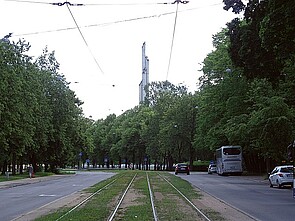
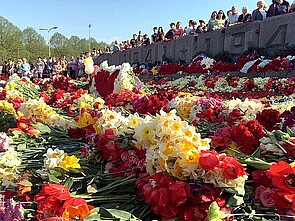
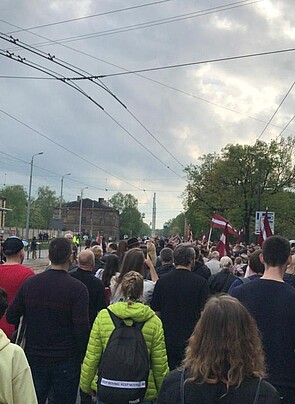
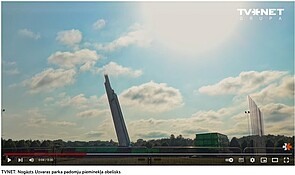
Katja Wezel · 17.08.2022
Feeling the Horrors of Latvia’s 20th Century: The New Exhibition of the Occupation Museum in Riga
Read more
Eva-Clarita Pettai · 22.07.2019
Delayed Truth: Latvia's Struggles with the Legacies of the KGB
Read more
Paula Oppermann · 31.05.2018
A Dual Legacy: Reviewing the New Exhibition at the Former Nazi Camp Salaspils
Read more
Pauls Raudseps · 12.09.2017
Unstable Stalemate: Latvian Liberalism in Limbo
Read more
· 01.01.1970
Latvia
Read more
Get this article as PDF download (including pictures).